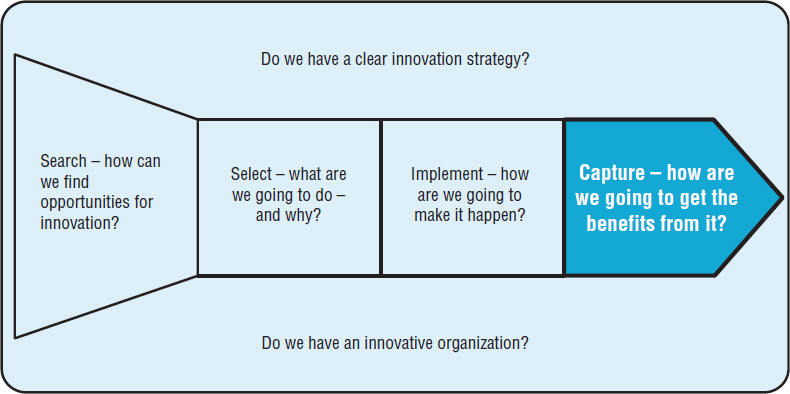PART VI
Capture


In this final phase, we examine how can we ensure that we capture value from our efforts at innovation. Chapter 11 looks at the relationships between different types of knowledge, innovation and performance. Managing intellectual property has become an increasingly significant issue in a world where knowledge production approaches $1 bn per year worldwide, and where the ability to generate knowledge may be less significant than the ability to trade and use it effectively. However, innovation can also create significant social benefits, including core contributions to global development and sustainability.
Finally, Chapter 12 looks at how we can assess the ways in which we organize and manage innovation and use these to drive a learning process to enable us to do it better next time. The concern here is not just to build a strong innovation management capability but to recognize that – faced with the moving target which innovation represents in terms of technologies, markets, competitors, regulators and so on – the challenge is to create a learning and adaptive approach which constantly upgrades this capability. In other words we are concerned to build ‘dynamic capability’.
Get Managing Innovation: Integrating Technological, Market and Organizational Change, 5th Edition now with the O’Reilly learning platform.
O’Reilly members experience books, live events, courses curated by job role, and more from O’Reilly and nearly 200 top publishers.

